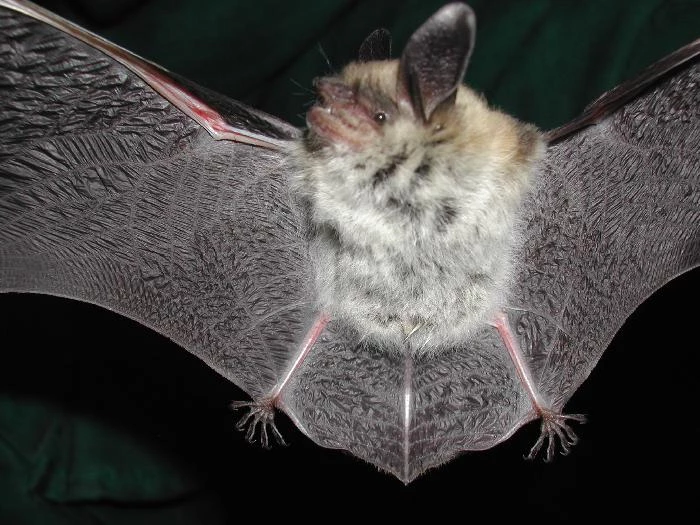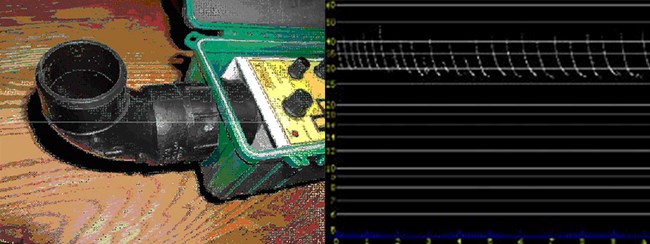Last updated: May 10, 2018
Article
Bat Inventory of Golden Gate National Recreation Area

USGS
Importance
Bats are both economically and ecologically important, providing ecosystem services such as predation of insects and pollination.
Biodiversity of bats in the United States is relatively low (i.e. 45 species) compared to other groups of organisms. California's central coast is known to support 17 species, nine of which are believed to be at risk and have special status under state or federal law. Bats are nocturnal and use inaccessible roost sites, making them difficult to study in the wild. In general, bat populations are declining because of direct and indirect human impacts, including destruction of foraging and roosting sites. Most species also have very low reproductive rates, resulting in long recovery periods after population declines. In addition, many populations are constrained by a limited number of specific roosting sites for a large number of individuals.

NPS
Inventory Methods
Between July 2004 and July 2005, researchers detected bat vocalizations in Golden Gate using Anabat bat detectors. The graph of each call can often be used to determine the species based on the frequency, call shape, call duration, and time intervals.
The first bat inventory station in the National Park Service San Francisco Bay Area Network was set up in December 1999 at Point Reyes National Seashore. Since then, they have installed twelve additional stations including three in Golden Gate: one each at Fort Baker, Fort Funston, and Tennessee Valley. Because the Anabat system requires 24-hour access to 110-volt power, all sample sites were constrained to be on or near structures. Whenever possible, researchers placed bat monitoring stations near apparently good bat habitat and a water source (such as a pond or stream).
The Anabat bat detector records ultrasonic sounds, lowers them into a frequency range that can be heard by the human ear, and stores them as a graph on a computer. For most bat calls, each vocalization sweeps down in frequency (pitch). The slope of this sweep and the lowest frequency are important features that assist in analysis and species identification. However, the characteristics of a call can vary depending on a bat's actions. For example, when an individual bat is flying in the open, it will tend to to produce lower pitched calls that sweep through a small range of frequencies. If the bat flies through the more cluttered understory of a forest, the calls tend to increase in pitch, sweep through a wider range of frequencies, and occur more frequently. Calls also change when a bat detects a flying insect.
The variability in vocalizations within each species means that not all calls can be easily assigned to one species. As part of this inventory, researchers developed software to examine eight to ten features of each call and compare them to those of calls from known species. Calls that were a close match were assigned to a particular species.
Inventory Findings
A total of over 360,000 bat calls were recorded at the three Golden Gate monitoring sites, ranging from 12,000 at Ft. Baker to over 200,000 at Ft. Funston (Table 1). Researchers identified at least eight species of bats (Table 2).
The difference in the numbers of calls recorded at the three different monitoring sites can likely be attributed to both the number of individual bats in the vicinity of the detector at each site and the activity of a few bats that might be foraging in the vicinity of the detector.
| Site | Days | Total # of Calls | Average # of Calls per Day |
|---|---|---|---|
| Ft Baker 2004 | 129 | 10,201* | 79 |
| Ft Baker 2005 | 189 | 1,765* | 9 |
| Ft Funston 2004 | 128 | 76,359 | 597 |
| Ft Funston 2005 | 189 | 133,263 | 705 |
| Tennessee Valley 2004 | 128 | 80,140 | 626 |
| Tennessee Valley 2005 | 192 | 59,579 | 310 |
| Totals | 955 | 361,307 | 378 |
| Scientific Name | Common Name | Fort Baker | Fort Funston | Tennessee Valley |
|---|---|---|---|---|
| Myotis yumanensis | California or Yuma Myotis | - | + | + |
| Myotis lucifugus | Little Brown Myotis | + | + | - |
| Myotis thysanodes | Fringed Myotis | - | + | + |
| Eptesicus fuscus | Big Brown Bat | - | + | + |
| Lasionycteris noctivagans | Silver-haired bat | - | + | + |
| Lasiurus blossevilii | Red Bat | + | + | + |
| Lasiurus cinereus | Hoary bat | + | + | + |
| Tadarida brasiliensis | Mexican free-tailed bat | + | + | + |
-Not Detected
*Federal Species of Management Concern (insufficient information for listing under the Endangered Species Act).
The red bat, hoary bat, and Mexican free-tailed bat were detected at all stations. Two of the most common bats in the San Francisco area (California myotis and Yuma myotis) cannot be distinguished acoustically, so they are lumped together for the purposes of this inventory. Researchers have detected one moderately uncommon bat, the long-eared myotis (Myotis eyotis), in other parts of the Bay Area, but not in this study. Bat inventory and monitoring research at various sites in Golden Gate is ongoing.
Additional Resources
Fellers, Gary M. 2005. Acoustic Inventory and Monitoring of Bats at Golden Gate National Recreation Area. USGS.
Links
San Francisco Bay Area Inventory & Monitoring Network
Pacific Coast Science & Learning Center
USGS Western Ecological Research Center - Play phase calls, feeding buzzes, and social vocalizations.
San Francisco Bay Area Network Species Lists - Certified Species lists including residency, abundance, and native/non-native status.
Article: Collaborative Bat Study Begins in Marin County - Update on more current, ongoing bat research.
Bat Inventory of Muir Woods - Compare bat species found at Muir Woods.
Summary by Alison Williams for the Pacific Coast Science and Learning Center, February 2009.
